Part 4: It's Not Very Effective...
Update 4: It's Not Very Effective...Wedgehurst - Pokémon Sword and Shield OST
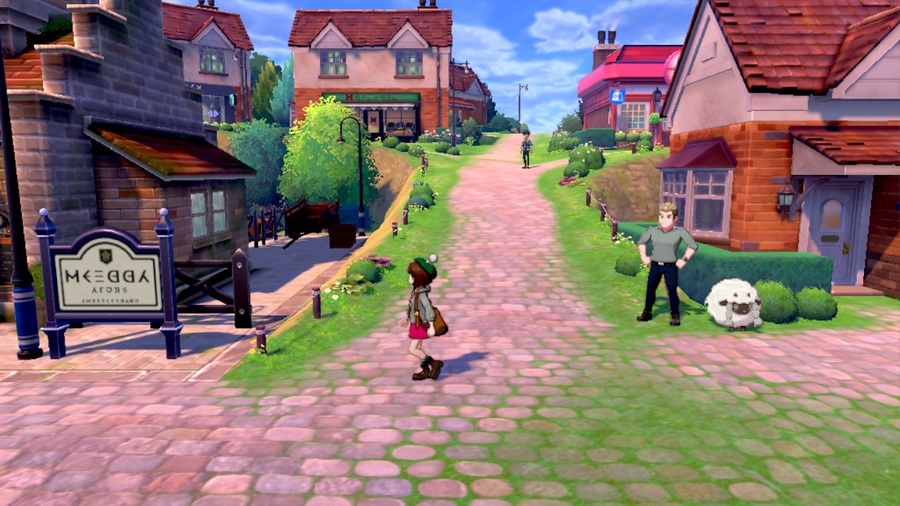
Ah, Wedgehurst, a town with more than two buildings. There’s a train station off to the left – Leon came out of it a couple updates back – but while we will be using it eventually, that’s still in the future. You can go into buildings and pester the people in there (who will react like you just asked them to explain something in the classroom), go hit up the Pokémart –
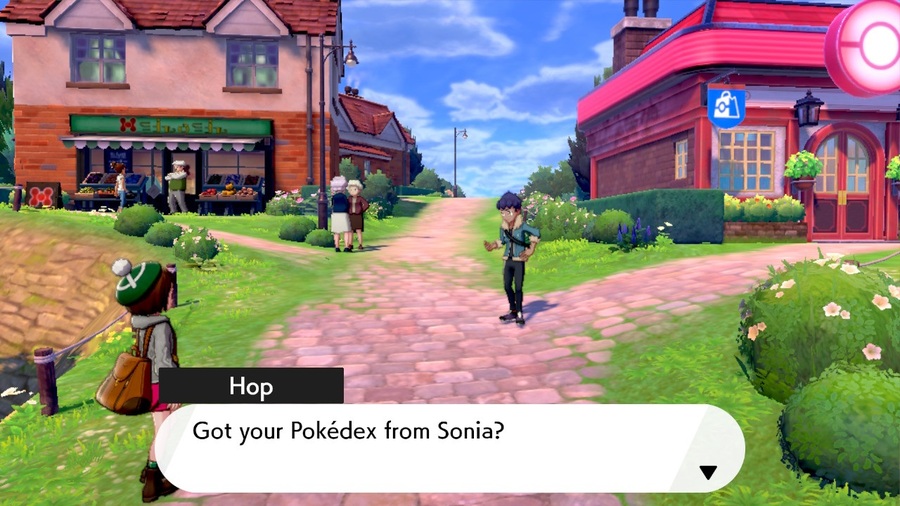
Whoops, interrupted by the tutorial. Hop takes the chance to explain Pokémon Centers and Marts in detail, but rather than transcribe all that, I’ll bottom-line it for you. Most towns have a Pokémon Center building, always marked by that big red Pokéball (like in the upper right). In older games, it and the Pokémart, which sold you items, were always in adjacent buildings (except at the ends of long routes, where centers sometimes showed up on their own); apparently, they’ve long since consolidated them.
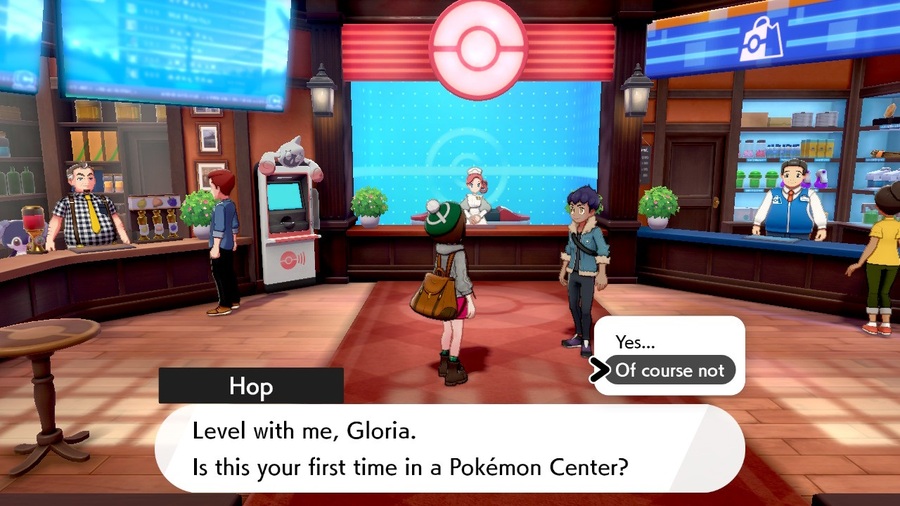
So in here we have three different sections. Across from the entrance and just under the Pokéball is the Pokémon Center proper, which heals all of your Pokémon for free.

That 4th Pokémon is this weird bug I found, it sucked so I got rid of it.
You even get a nice graphic! It fully restores their heath, revives any
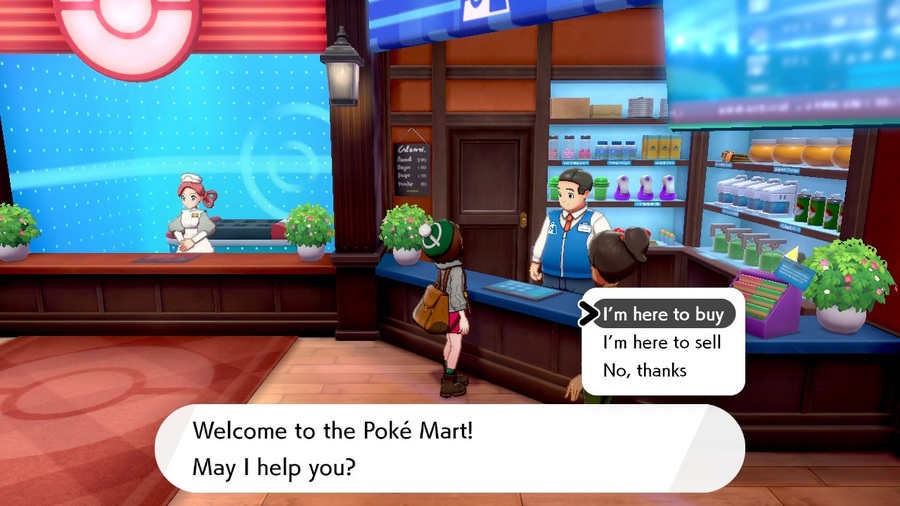
Here is the Pokémart; it sells you the local equivalent of healing potions, status effect removers, and Phoenix Downs, plus Pokéballs, items that can manipulate your Poké’s stats mid battle, and ways to teach them new moves. In previous games, these were rarer than Pokémon Centers, which the games used as breathers between areas as well as setting them up in towns; here, you can find Pokémarts both in Centers and in the occasional other building. The train station back there has one.
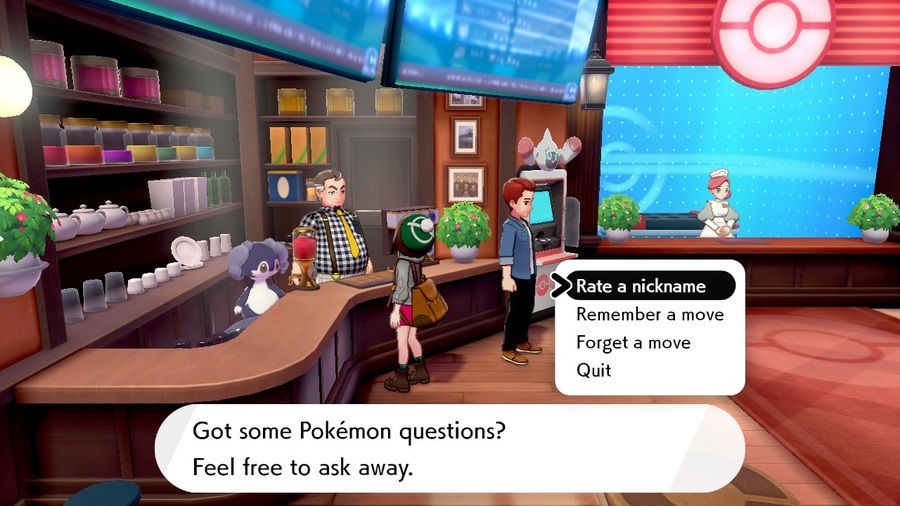
This due lets you rename your Pokémon or shuffle around their move list. In olden days, two other people split his duties between them and there was only one of each in the entire game; here, this guy shows up in pretty much every Pokémon Center.
Also, that computer in the back is haunted by a Rotom (or it straight up is a Pokémon with an Internet connection, I don’t know). You go there to get rid of Pokémon you don’t want to by digitizing them Tron-style, downloading them back into your party later if you want. It’s what you do with all the Pokémon you were filling your Pokédex with. In Gen 1, the computer system had its own subplot; you had to visit its inventor, Bill Gates, by fighting your way through a bridge full of schoolchildren, after which a gangster gave you a piece of gold ore. No, really.
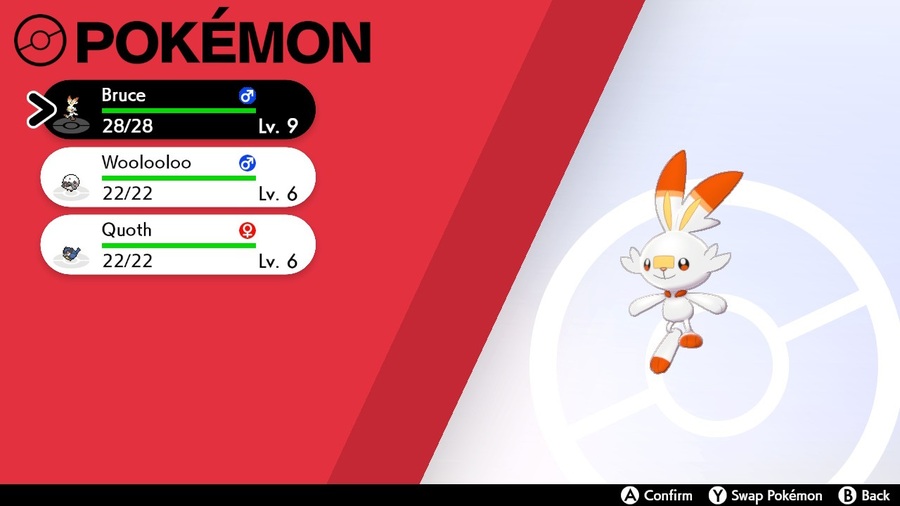
Looks like we’re all set.
As you’d expect, you can enter most buildings with doors and engage in conversations like you belong there. Most of them are just some variation on “gosh I just so do love Pokémon”, but some of them…
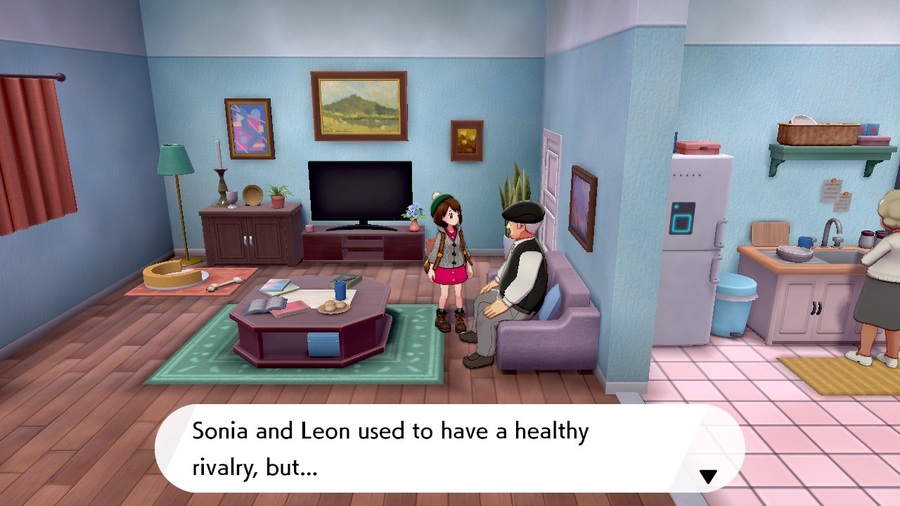
Wow, the townsfolk are still talking about this. Leon won the Championship years ago. What happened that was so dramatic it’s still around in the public consciousness?
On a lighter note…

Well, well, well, what’s all this then? We’ll be back for you later.

 If you’re a Pokémon trainer now, you must want to try your hand at the Gym Challenge, right?
If you’re a Pokémon trainer now, you must want to try your hand at the Gym Challenge, right? No shit.
No shit. But the trick is that you’ve got to be endorsed if you want to take part. And Lee doesn’t seem to think I’m up to snuff…
But the trick is that you’ve got to be endorsed if you want to take part. And Lee doesn’t seem to think I’m up to snuff…  Did he say so?
Did he say so?  He said he won’t sponsor me. That’s not very ambiguous…
He said he won’t sponsor me. That’s not very ambiguous… Maybe he just didn’t want to make it look like nepotism.
Maybe he just didn’t want to make it look like nepotism. Well, maybe. So I’m thinking I ought to talk to the professor and see if she could help! You’ve got to take part, too! A proper rival is just the thing every trainer needs to keep growing stronger, after all. Keeps you motivated, right?
Well, maybe. So I’m thinking I ought to talk to the professor and see if she could help! You’ve got to take part, too! A proper rival is just the thing every trainer needs to keep growing stronger, after all. Keeps you motivated, right? Yeah, exactly. Sir, are you asking me to be your rival?
Yeah, exactly. Sir, are you asking me to be your rival? Indeed I am.
Indeed I am. Then I graciously accept.
Then I graciously accept. So how’s the crush then?
So how’s the crush then? Oh, Sonia’s –
Oh, Sonia’s –  Hop!
Hop!

 You wanker. But, she’s all bitter now, have you noticed?
You wanker. But, she’s all bitter now, have you noticed? Yeah, I think Leon’s victories are finally getting to her.
Yeah, I think Leon’s victories are finally getting to her.  Do you think we should bring that up with the professor? I doubt it’s healthy and I’m starting to worry about her.
Do you think we should bring that up with the professor? I doubt it’s healthy and I’m starting to worry about her. Sure. Can’t hurt, right?
Sure. Can’t hurt, right?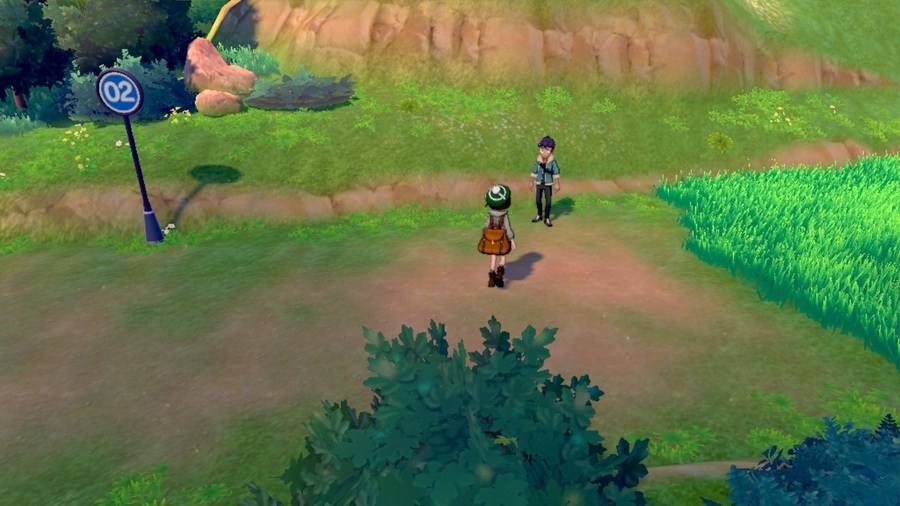
Finally, our first real route – in Pokémon speak, the paths that connect various towns, always crawling with Pokémon to catch and Trainers to mug. As we walk down the road, Leon appears out of nowhere to lecture us on capturing Pokémon, but I beat him to the punch so we don’t care. I didn’t even bother screenshotting it.
In short order we run into another weird bug, which lets me show off type advantages!
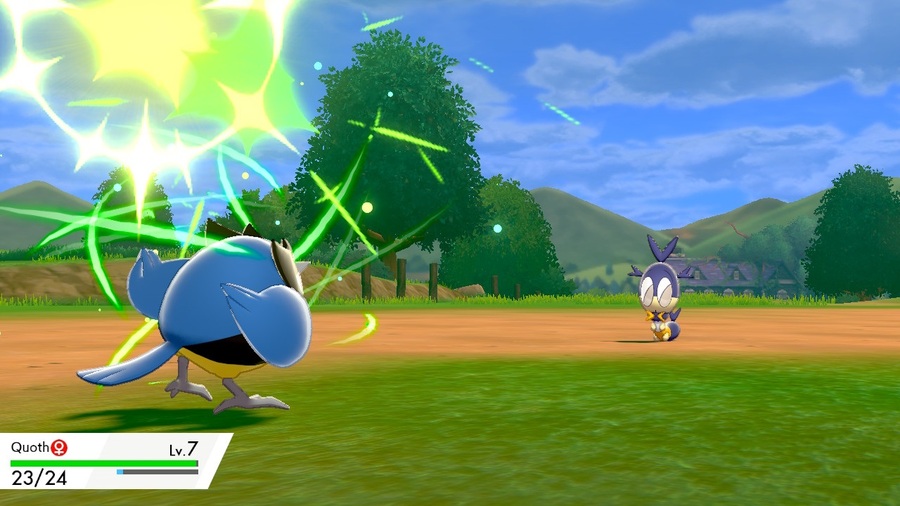
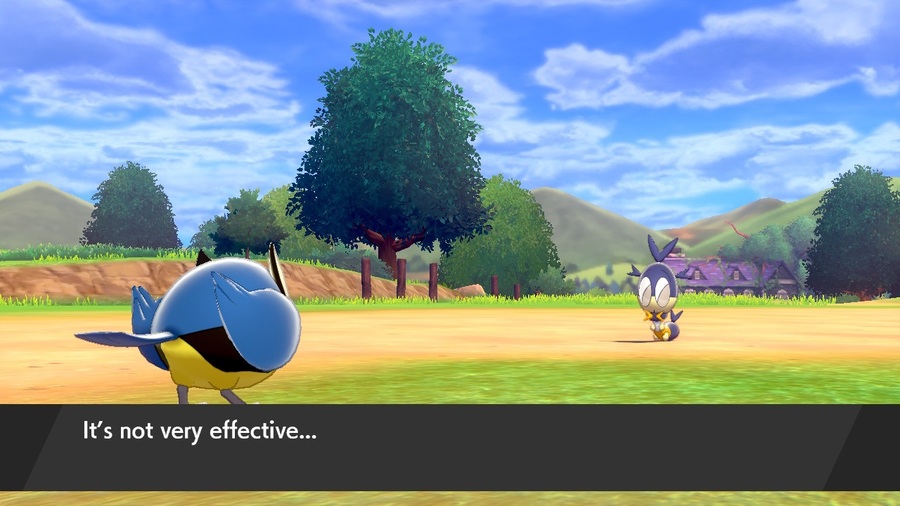
Bug versus Flying?

On the other hand, Flying versus Bug?
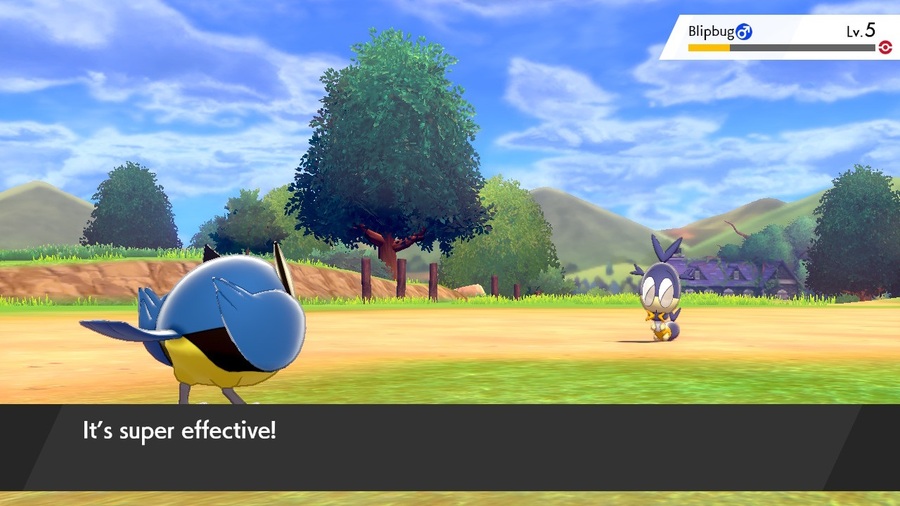

Every creature in the game has one or two elemental types drawn from a long list ranging from Fire to Ice to Poison to Dragon. Each type interacts with every other type in a set way; for any given type interaction, an attack either does double damage (say, Grass versus Water), half damage (say, Normal versus Rock), or no damage (say, Electric versus Ground). Types also stack, so moves can do quadruple or quarter damage, have the advantages canceled out for regular damage, or have otherwise favorable interactions canceled out entirely (for instance, Psychic does double damage to Fighting, but it does no damage to Dark, so a Psychic attack against a Fighting/Dark Pokémon will have no effect). Of course, because this isn’t already complicated enough, not all type advantages are reciprocal; for instance, Dark takes no damage from and does double damage to psychic Psychic, but Normal and Ghost have no effect on each other. Since advantages are only ever vaguely explained, you end up in to memorize a network of type interactions through either study or experience. It’s an endeavor.
In theory, type relationships are common sense, the sort of thing you can reason out just by comparing them. In practice, half the system only makes sense in some developer’s head, so you best get to memorizing.
When you combine all that with how important stat modifications can be, the two different types of attack, and the set stat ranges and move lists of every type of Pokémon, Pokémon ends up a game based heavily on memorizing countless little elements and how they interact. If you’ve ever run into a kid who can identify any Pokémon by Pokédex number alone – and I have – it’s because the game rewards that type of thinking. Of course, it’s entirely possible to play Pokémon without bothering with all the nitty-gritty details, especially if you just want to play the game solo. If you want to play competitively, then that’s a whole other world with layers I don’t even begin to comprehend (I don’t know what an IV is and I don’t want to find out). With Shield (and Sword to probably), as long as you catch solid Pokémon and fight just about every trainer you run into, you’ll be crazy over leveled at the end of the game and wipe the floor with most of your opponents. Speaking of which!
Pokemon Sword & Shield - Trainer Battle Music
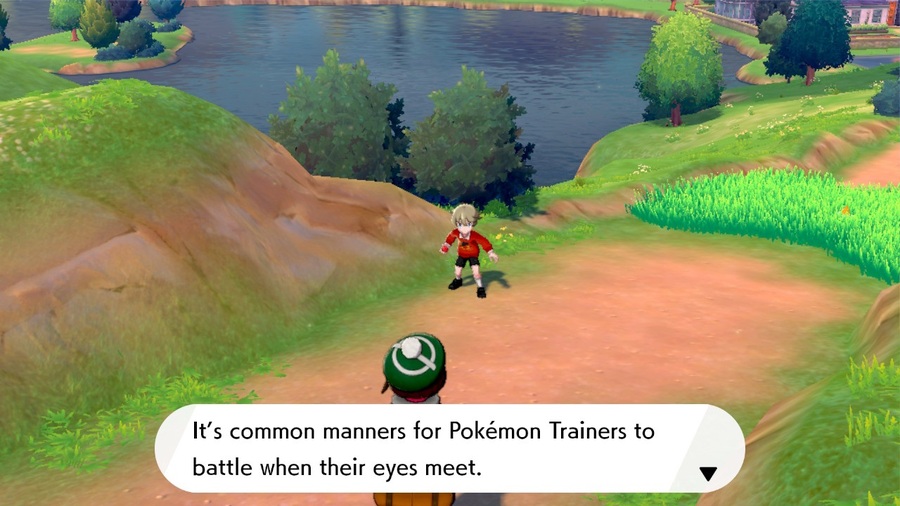
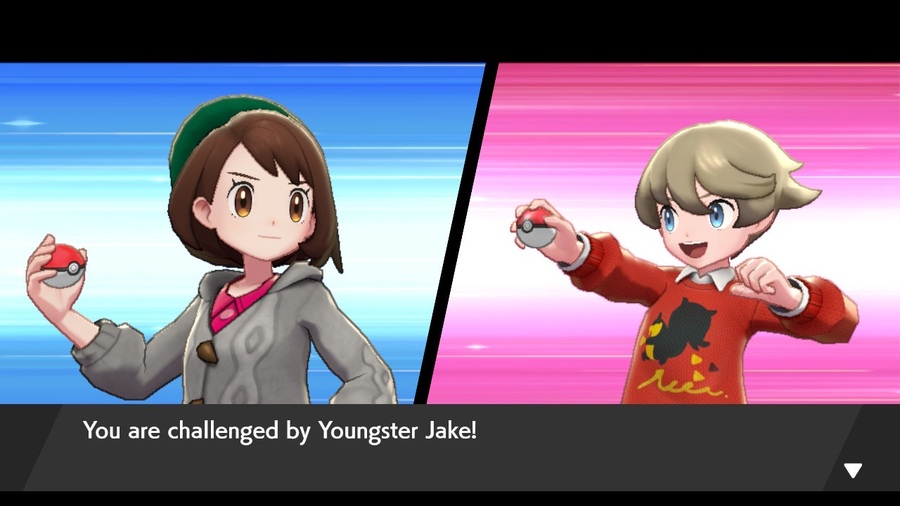
Here’s some loser about to get wrecked! In older generations, with the game laid out in a top-down grid, you measured Trainer line of sight in a literal line (and since the line had a defined ending, it was possible to mess with it and cause glitches, a time-honored Pokémon tradition). Now, the screen just narrows when you approach them vaguely from the front. I covered the basics earlier, so I won’t waste time now – but rest assured, this will be the first of my many victims.

My reward?

Moves are not type restricted (for instance, Double Kick here is a Fighting move that our Fire-type Bruce can pick up). Since even thematically similar types have very different strengths and weaknesses, picking the right moves can round out your team and even let them pack in surprises. Usually the kinds of moves a Pokémon can use make at least a little sense, but you can get some real oddballs in there; knowing which Pokémon can learn what moves is another reason to resort to memorization.
Part way down the Route, we catch this… creature.
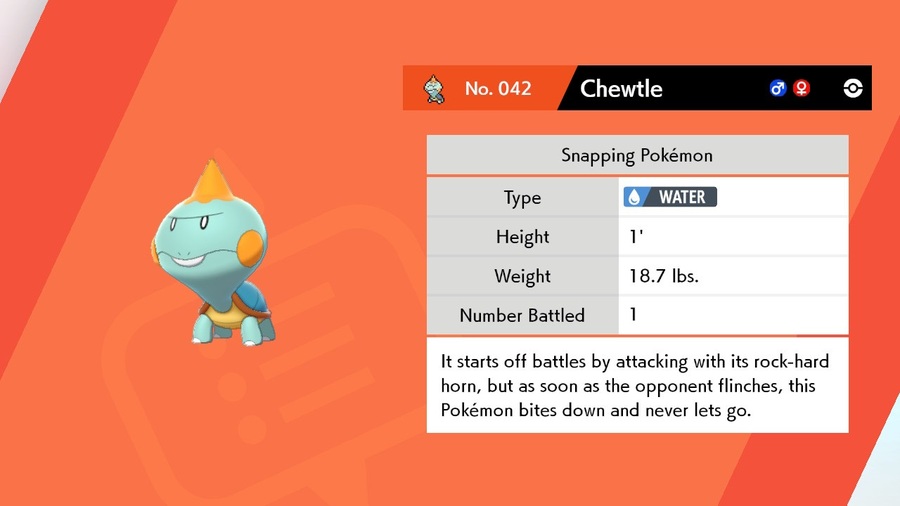
Right now, our team is pretty unbalanced; we could really use access to a wider variety of moves. So I Water-type. Because I had to. God I hate it, it’s the ugliest thing in my party.
FoolyCharged posted:
fixed
Incorrect. Look at this bastard.
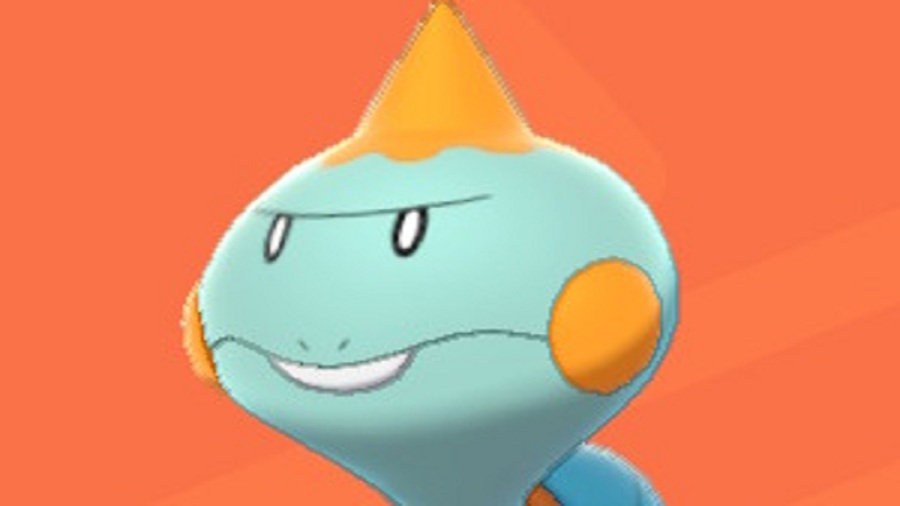
It’s a face even a mother could hate.
Professor Magnolia's Laboratory - Pokémon Sword and Shield OST

 So have you unraveled all the secrets of the Dynamax phenomenon yet?
So have you unraveled all the secrets of the Dynamax phenomenon yet? Oh, you flatter me! The whole thing is still full of questions. I’d hoped that my granddaughter would take over my research, but…
Oh, you flatter me! The whole thing is still full of questions. I’d hoped that my granddaughter would take over my research, but…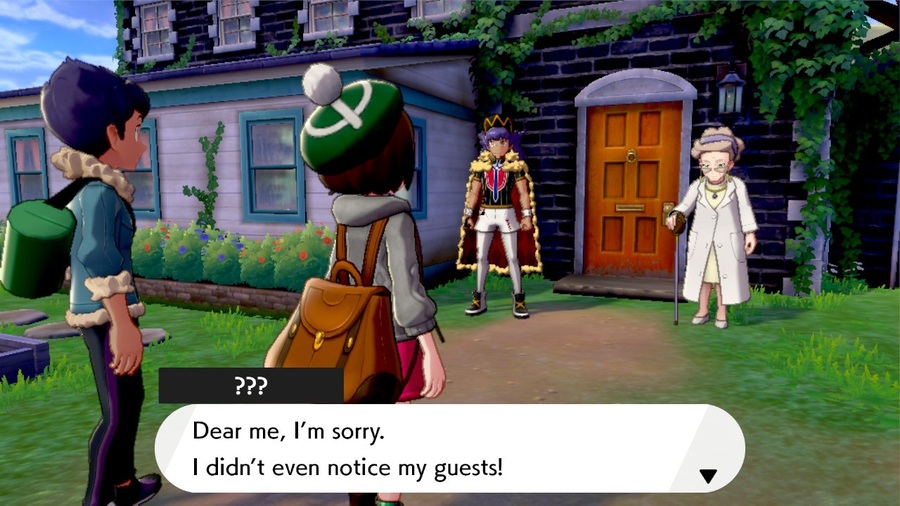
 My name is Magnolia. Welcome, young Trainers! Now, come, let’s head indoors.
My name is Magnolia. Welcome, young Trainers! Now, come, let’s head indoors.For those of you at home, our Chewtle needs a name. PS Boyo is now locked in.